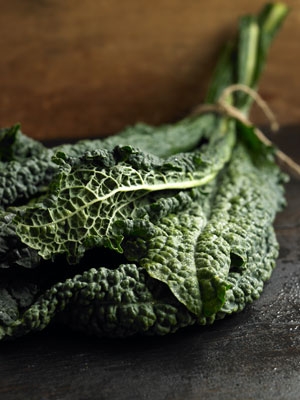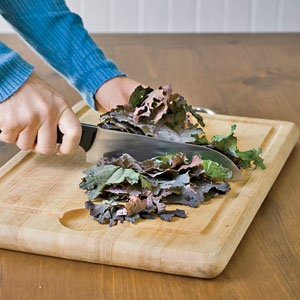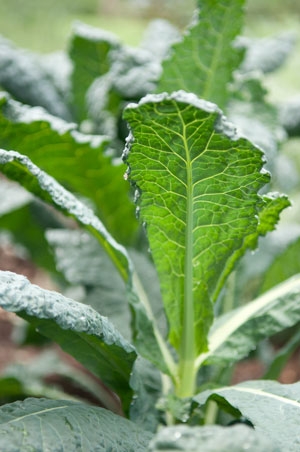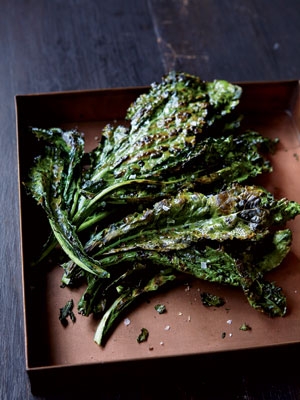To all the lovely people,
This past fall and winter I have grown 3 varieties of Kale and use it and other vegetables and fruits to make a nutritious meal in our Vita-mix. Delicious, good and healthy. Below is an article I found at
organicgardening.com that some of you might be interested in reading.
Paul
4 Reasons to Eat More Kale
Like water? Who doesn’t? But if you really like it, you might want to also start liking lentils, kale, nuts, and bread—and pretty much anything that doesn’t come from an animal.
A new report from the Stockholm International Water Institute suggests that the world’s limited supply of freshwater cannot sustain the world’s ever-increasing consumption of meat, particularly if every other country continues to mimic the modern American diet, in which we get 65 percent of our protein from animal products. In order to quench such a meat-heavy appetite, farmers would use up nearly all the world’s freshwater resources in the next 40 years.
Why? It takes a ridiculous amount of water to grow the grain that feeds the pigs, chickens, and cows that we eat every day, says Robert S. Lawrence, M.D., director of Johns Hopkins University's Center for a Livable Future, which researches the human and environmental problems associated with modern agriculture. It takes 110 gallons of water to grow a pound of corn, according to the U.S. Geological Survey, and it takes as much as 11 pounds of grain to raise a pound of beef. When you factor in the water that cattle need to drink, the amount can skyrocket to 4,000 to 18,000 gallons of water per pound of beef.
Then consider the sheer numbers of animals we eat, Dr. Lawrence says. “Right now, we’re raising 50 billion animals a year for human consumption on this planet. In the U.S. alone we consume 8 billion.” When you think that 1 million chickens are slaughtered every hour, he adds, you start to see where things are getting out of control.
The Stockholm researchers say that we’d all need to reduce our meat consumption to no more than 5 percent of total calories in order to sustain water resources. Cutting meat consumption by 60 percent may sound extreme, but even cutting back by 15 percent—about one vegetarian day per week—can do wonders for your health and for the rest of the world.
Keep reading for a few of those benefits to convince you it’s worth it:
1. You won’t die (at least, not for a while).
One of the most compelling reasons to go vegetarian at least one day a week is you. Meat-heavy diets have been tied to a host of health complications, ranging from blindness to lung disease to stroke. One of the most comprehensive studies to date, published in the Archives of Internal Medicine, tracked more than 37,000 adults and found that simply eating one vegetarian meal per day could lower the risk of dying from cancer or heart disease by as much as 20 percent.
2. Better beach vacations.
As the Stockholm International Water Institute points out, it’s not always the animals but what they eat that causes major global crises. And when it comes to animal feed, pesticide- and fertilizer-heavy corn reigns supreme, making up 90 percent of what pigs, chickens, and cows eat. Growing that corn requires heavy doses of nitrogen-based fertilizers, which farmers often overuse. The excess gets washed into the Mississippi River and then dumped into the Gulf of Mexico, creating large algae blooms that kill animals. Public health officials often need to close beaches when nitrogen pollution is high—and that’s a real buzz kill for any vacationer.
3. Fewer embarrassing infections.
One really unpleasant side effect of eating too much meat? Urinary tract infections (UTIs). A study from McGill University in Montreal found that grocery-store chicken is often contaminated with a form of E. coli bacteria known to cause UTIs, and what’s worse is that the bacteria is resistant to many of the antibiotics used to treat the condition. The bacteria can live on in your gut and cause problems as much as 6 months after eating the contaminated meat. That doesn’t happen when you eat kale!
4. A fatter wallet.
If you think 79-cent-per-pound chicken is a good deal, consider this. Last year, reporters from The New York Times conducted their own test to see how cheaply a family of four could eat. They paid $28 for dinner for four at McDonald’s, but were able to pay $14 for a dinner of chicken, potatoes, and a salad and just $9 for a mostly vegetarian dinner of pinto beans, rice, bacon, and various seasonings. And that $9 meal also had the fewest calories of the three. In most areas, you can buy a pound of dried beans—a 1-cup serving of cooked beans contains almost as much protein as a 3-ounce serving of beef—for less than $3, and it will yield 12 servings of beans, cooked.




